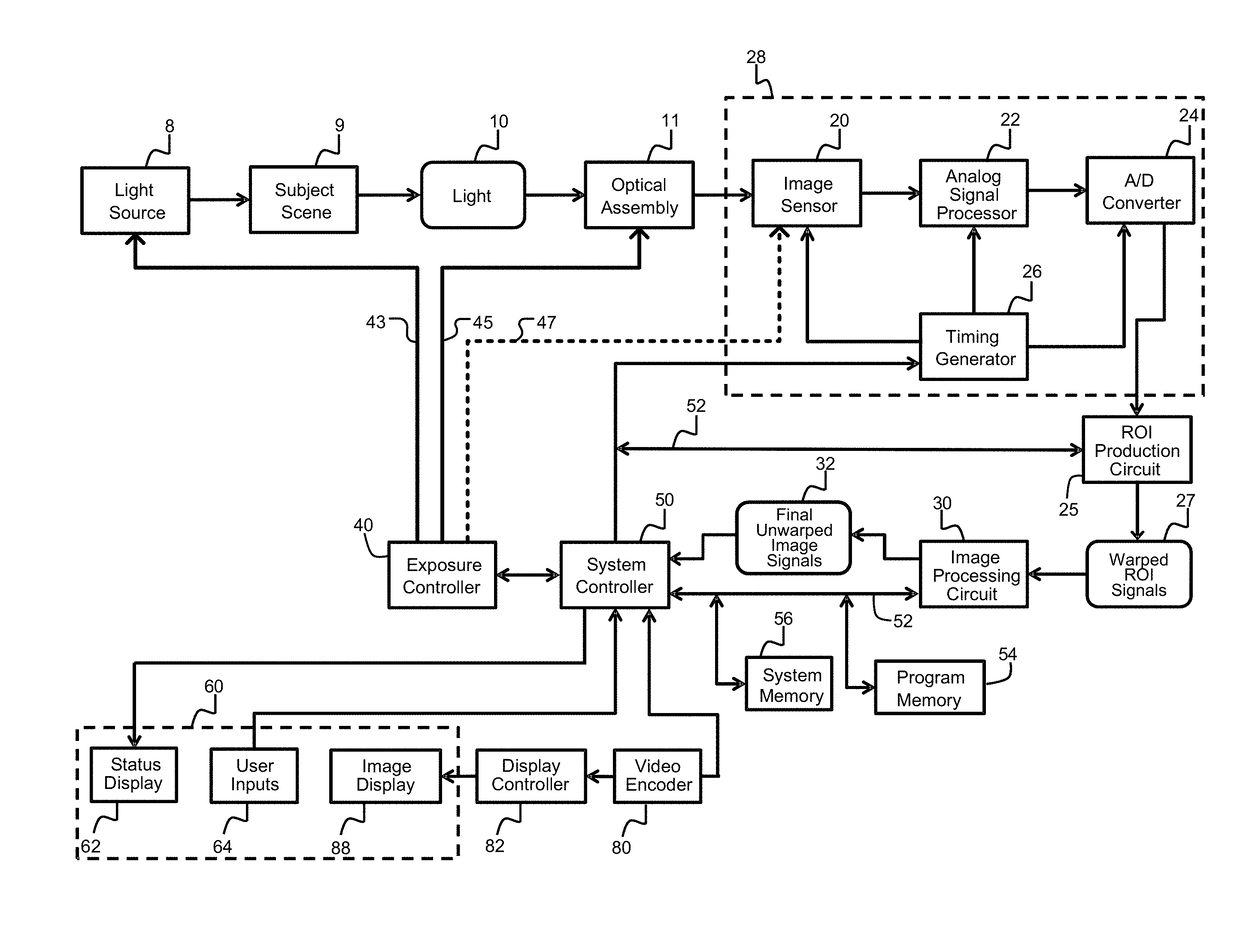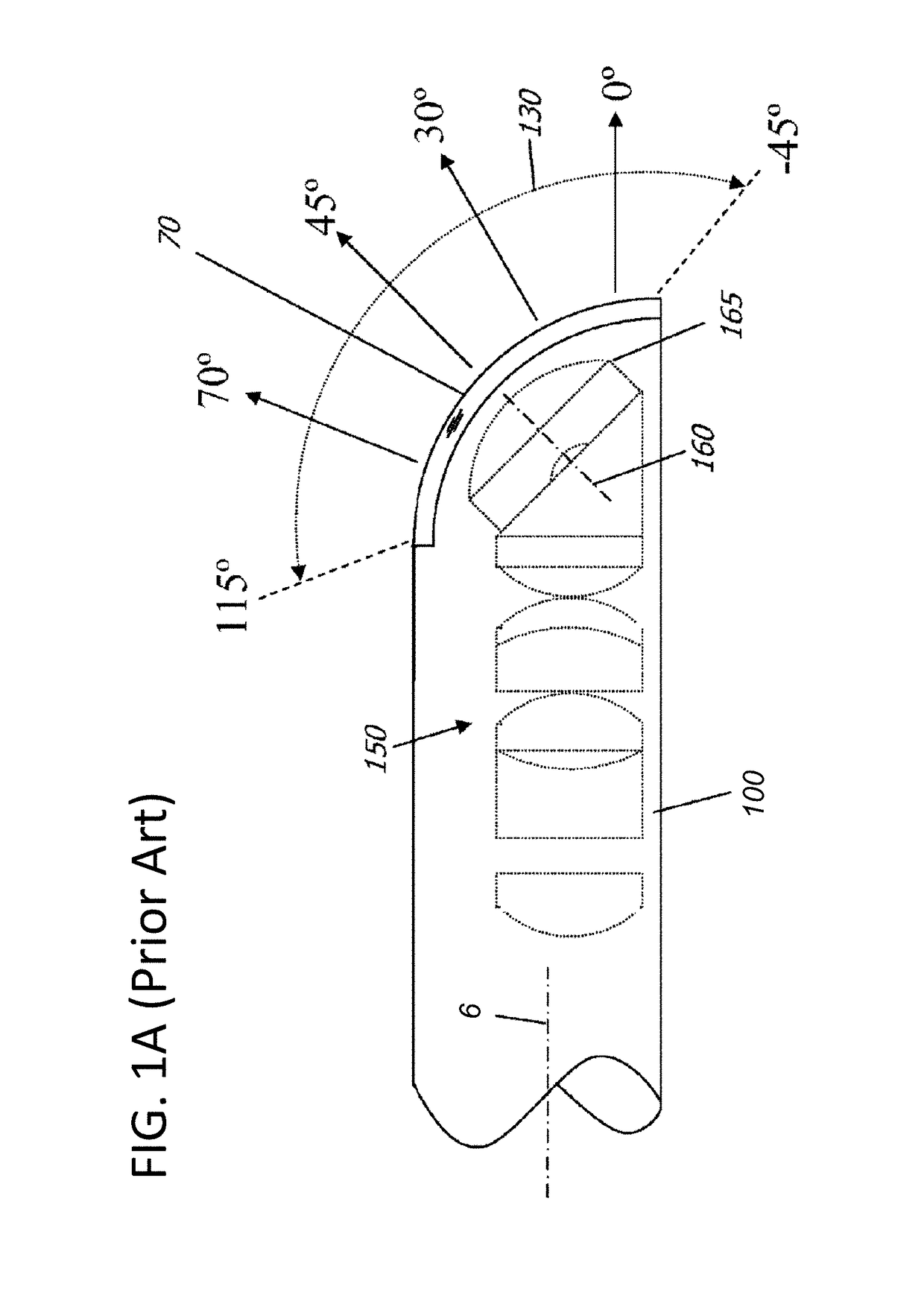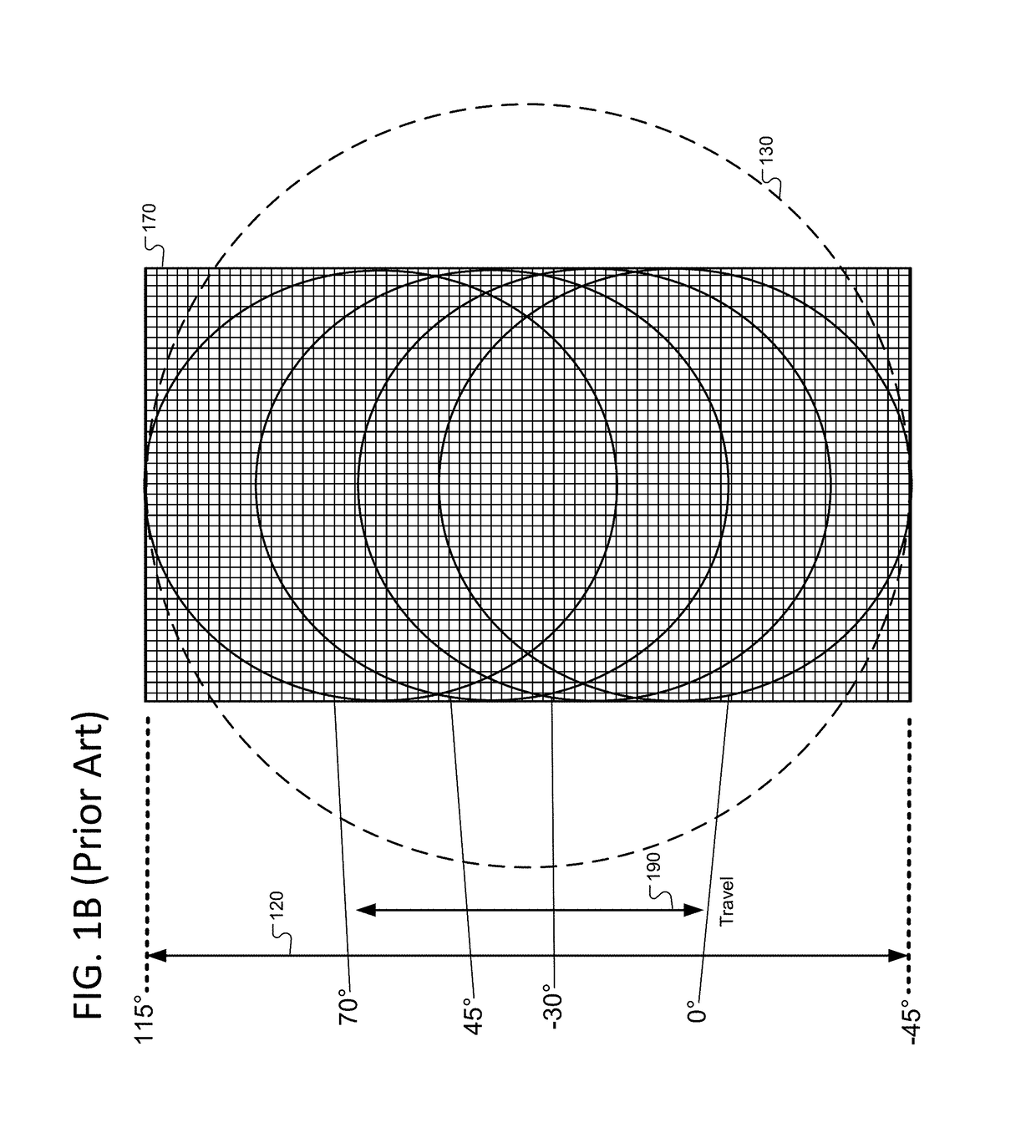Exposure control method and system for an image capture device
an image capture and control method technology, applied in the field of image capture, can solve the problems of not providing accurate pixel counts of the corresponding undistorted image, non-linear increase of image magnification, and high non-linear barrel distortion, so as to improve image quality, improve image control, and improve image quality.
- Summary
- Abstract
- Description
- Claims
- Application Information
AI Technical Summary
Benefits of technology
Problems solved by technology
Method used
Image
Examples
Embodiment Construction
[0027]The invention provides improved control of exposure for imaging devices with a wide angle lens system, such as an endoscope device that gathers an endoscopic image field at least spanning the longitudinal axis relatively large angles off of the longitudinal axis. A preferred version is employed in an endoscope such as the one described in U.S. Pat. No. 8,814,782 to Hale, et al, issued Aug. 26, 2014, which is hereby incorporated by reference. The techniques and features herein may also be embodied in other types of image capture devices, digital microscopes, certain digital cameras, virtual reality (VR) cameras and VR camera rigs of multiple cameras, mobile phones equipped with imaging sub-systems, and automotive vehicles equipped with imaging sub-systems, for example.
[0028]FIG. 1A shows a cross section of a distal tip 100 of a prior art wide-angle endoscope in which the invention may be implemented. The depicted distal tip 100 has longitudinal axis 6, a viewing window 70, and ...
PUM
 Login to View More
Login to View More Abstract
Description
Claims
Application Information
 Login to View More
Login to View More - R&D
- Intellectual Property
- Life Sciences
- Materials
- Tech Scout
- Unparalleled Data Quality
- Higher Quality Content
- 60% Fewer Hallucinations
Browse by: Latest US Patents, China's latest patents, Technical Efficacy Thesaurus, Application Domain, Technology Topic, Popular Technical Reports.
© 2025 PatSnap. All rights reserved.Legal|Privacy policy|Modern Slavery Act Transparency Statement|Sitemap|About US| Contact US: help@patsnap.com



